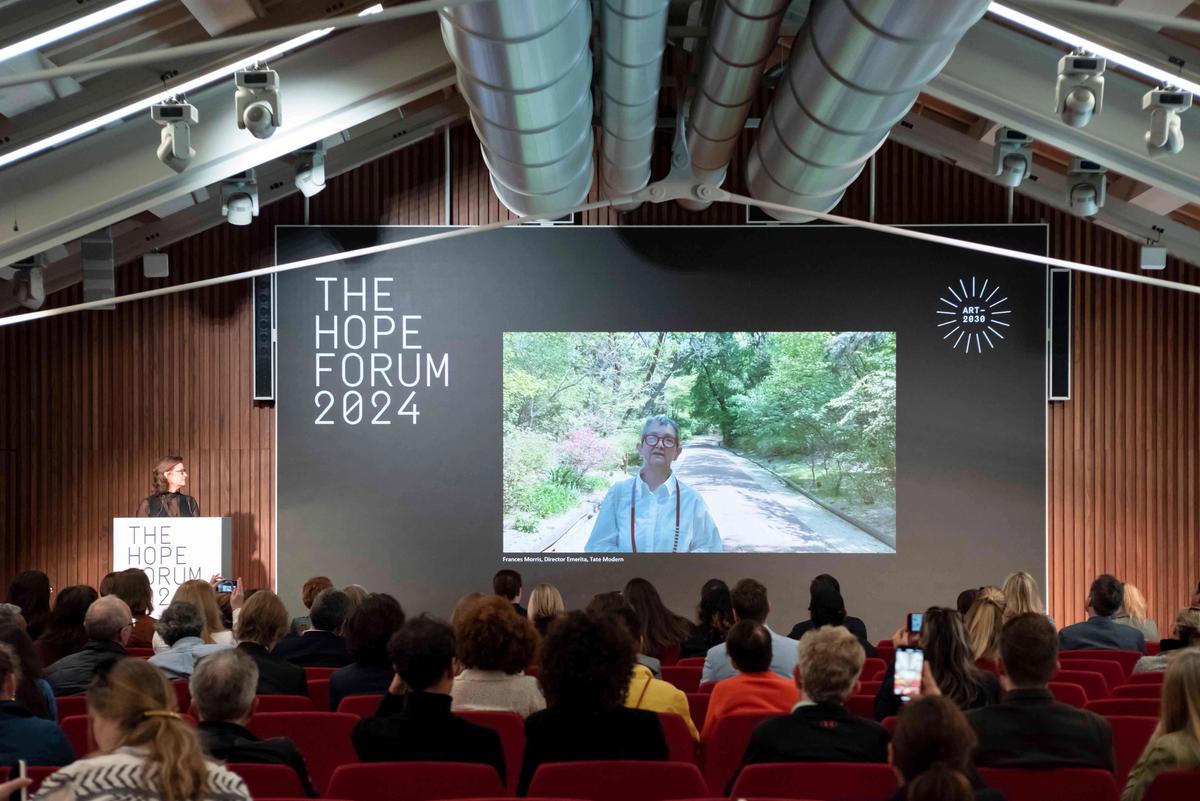Built in the middle of a shallow lagoon—and subject to high tides and Adriatic storm surges—Venice has always had to grapple with the elements. But now, as the seas continues to rise, La Serenissima finds herself at the forefront of the current climate emergency, with the precariously sinking Stones of Venice evermore threatened by increasingly severe acqua alta floodings and extreme weather events.
This precarity was especially evident during the Venice Biennale’s mid-April opening week, during which temperatures soared and then plummeted, punctuated by monsoon-like downpours and a spell of gale force winds so acute that for a time the vaporettos were suspended. It was a meteorological maelstrom that offered an ominously appropriate backdrop to the launch, at the Biennale, of an important new initiative linking the international art world with the United Nations (UN) in a dual bid to combat climate change.
The initiative is centred around the Art Charter for Climate Action (ACCA), an agreement which aligns the art industry with the environmental terms of the Paris Agreement and the 2030 Agenda for Sustainable Development. That agreement was signed in September last year, but at the Hope Forum 2024 gathering on 19 April, it was taken a step further with the announcement that the ACCA Founding Alliance, which formed the agreement, would be officially partnering with the United Nations Framework Convention on Climate Change (UNFCCC), the UN’s environmental arm. This is a significant new development that confirms the visual arts sector as a serious force in tackling the climate crisis.
From now on the Art Charter for Climate Action will form the visual arts pillar of UN Climate Change’s Entertainment and Culture for Climate Action (ECCA) alliance, which is striving to implement meaningful environmental action within cultural, creative and entertainment communities in all of the UN’s 193 member states. This integration offers the visual arts sector a place at the UN table, and all of the political and infrastructural access, leverage and lobbying power that this entails.
“In order to achieve the goals of the Paris Agreement it is essential that all sectors take transformative action now,” said Simon Stiell, executive secretary of UNFCCC at the Hope Forum, amid a plethora of presentations and panel contributions including by artists Ai Weiwei, Alfredo Jaar, Cecilia Vicuña, Olafur Eliasson, Pedro Reyes, Tomás Saraceno and Superflex. Among the many other speakers was Magdalena Landry from Unesco, who stated the importance of culture as “a driver and an enabler for environmental development and solutions for environmental sustainability across all sectors”. Frances Morris, meanwhile, director emerita of Tate Modern and a longstanding champion of promoting environmental sustainability within the art world, described ACCA as an overarching “network of networks linking grassroots to big shoots for a green and just transition”. In her message, delivered via video, she also singled out the potential for it to act as “a common framework”, allowing all aspects of the visual art sector “to be united in our actions for the planet”.
Recent years have seen a number of environmental alliances and declarations made across the visual art sector—with many of them reported in this column. But even separated from its new UN partnership, the Art Charter for Climate Action comes with considerable clout. The main instigator of the charter and also of April’s Hope Forum gathering in Venice is Art 2030, a not-for-profit organisation which facilitates artist projects and lobbying initiatives that actively tie art and artists into the UN’s 17 interlinked Sustainable Development Goals (SDGs). (These goals, also known as Global Goals, were drawn up by world leaders at the UN General Assembly in 2015 as a “blueprint for peace and prosperity for people and the planet”, and stand as an aspirational marker for sectors and governments alike.)
There are three other heavyweight organisations responsible for bringing ACCA into existence. They are the International Committee for Museums and Collections of Modern Art (CIMAM), an influential institutional body whose members encompass more than 700 contemporary and modern art museum professionals from more than 60 countries; Gallery Climate Coalition, the international charity devoted to decarbonising the art world and promoting zero waste, which has in excess of 1000 members from every strand of the visual arts sector; and Julie’s Bicycle, the not-for-profit organisation with a long track record of working with creative industries to navigate climate change and achieve environmental sustainability. By coming together under the collective umbrella of ACCA, this quartet of far-reaching, environmentally committed organisations knits a plethora of individual actions into a powerful collective endeavour.
However, as is so often the case in matters environmental, initiatives are one thing, implementation is another. Now that the Art Charter has been launched and tied to the United Nations, its founding organisations need to combine recourses to ensure that their core environmental values become central to sector practices—and soon. This involves a mass buy-in from artists, museums, galleries, academics, the commercial art industry and production arms, as well as NGOs and individuals from throughout the global art world.
At the Hope Forum in Venice it was also announced that ACCA is now open to signatories from beyond those under the aegis of its four main founders—with any joiner-on needing to take measurable action to reduce the negative environmental impacts of developing, producing and exhibiting visual art. The arrival of new signatories is crucial, as only then can the collective endeavours of ACCA truly serve as a bridge to UN political implementation. As Luise Faurschou, director of Art 2030 said in Venice: “the time is now: we have to turn hope into action.”




